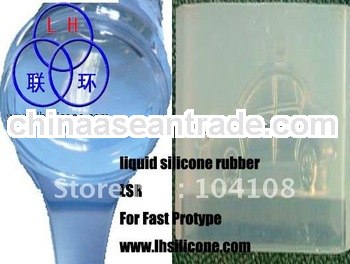Brand:aa
Product detail:
Features-RTV silicone rubber material for concrete molds making
1. Two-parts, flowable liquid silicon & curing agent.
2. It gets cured at room temperature 250C within 3-5 hours.
3. An exceptional fluidity and good operability, easy to be demolded.
4. Good tensile strength and tear strength, low shrinkage.
5. Suitable for both brushing and pouring methods of operations for medium & large sized molds making.
Usage-RTV silicone rubber material for concrete molds making
Silicon rubber for PU/poly resin products, unsaturated resin products, plaster, candles and gypsums crafts, toys, soap, statuary, casting molds making, etc.
CONDENSATION CURE RTV-2 MOLDMAKING SILICONE
Product | Catalyzed Viscosity:cps | Base Color | Specific Gravity | Mixed Ratio | Shore A Hard | Tensile (Mpa) | Elongation % | Tear KN/m |
RTV M20 | 20,000 | Beige | 1.10 | 100:2.5 | 20-22 | ≥2.8 | ≥500 | ≥2.0 |
RTV M25 | 21,000 | Beige | 1.11 | 100:2.5 | 25-26 | ≥3.0 | ≥480 | ≥2.5 |
RTV M30 | 30,000 | Beige | 1.15 | 100:2.5 | 30-32 | ≥3.8 | ≥460 | ≥2.8 |
RTV 330 | 20,000 | Translucent | 1.10 | 100:2.5 | 30-32 | ≥3.9 | ≥480 | ≥3.0 |
RTV M 40 | 32,000 | White | 1.20 | 100:2.5 | 43-45 | ≥2.5 | ≥300 | ≥2.0 |
Technical Guidelines-RTV silicone rubber material for concrete molds making
- Stir the base (Part A) well beofre use (except when depending on machine ).
- Shake the catalyst container (Part B) well before use.
- This is a 100 Part A to 5 Part B mixing ratio by weight.Weigh the desire amount of base into a clean mixing container.
- Weight the proper amount of catalyst into the container. Mix the base and catalyst together by stirring with a stick until a uniform color is obtained. Scrape the container walls and bottom well to insure a thorough mix.
- Though it is often unnecessary to deair the material due to its low viscosity some may choose to do so. If so,place the container into a vacuum chamber and evacuate the entrapped air from the mixture using a vacuum pump capable of achieving 29 inches of mercury vacuum.The mixture will rise, crest and then collapse in the contanier. Interruption(bumping) of the vacuum may be necessary to prevent overflowing the container. Keep the mixture under full vacuum for 2-3 minutes.
- Bleed air slowly into the vacuum chamber. When the chamber is at atmospheric equiplibrium,remove the cover plate and take out the container.
- Pour the deaired material slowly in a steady stream from one end of the mould so that the material flows evenly over the pattern. This should minimize emtrapment of air bubbles under the flowing material. A 'ready' mold may be poured firstly over the pattern, which will also help reduce the possibility of entrapping air on the pattern and in the cured rubber.A mold release agent may be applied on the pattern first to improve release.
- Allow the rubber to cure for 2-4 hours at 24C before removing the cured rubber mold from the pattern. Heat acceleration not recommended with this product.
- For best results, allow the mold to air cure an additional 24 hours before using it in production.
Any question ,please feel free to contact MS Betty Xu
TEL:0086-755-27052112
FAX:0086-755-27052562
Mobile:0086-15814448960
skype:betty8980
Website:www(dot)lhsilicone(dot)com















 Legal status confirmed
Legal status confirmed

